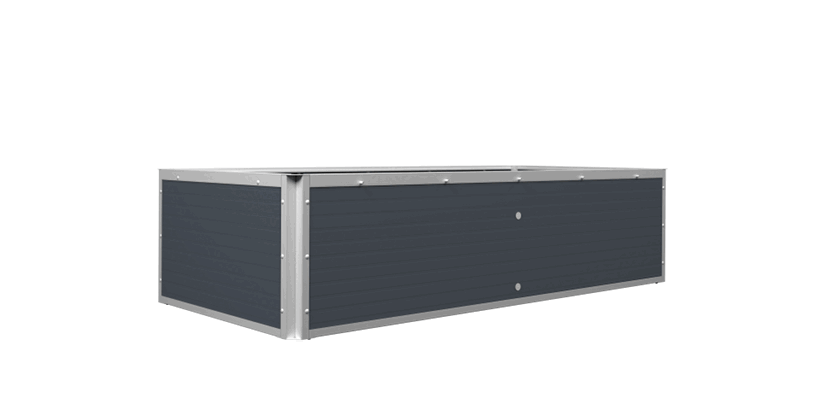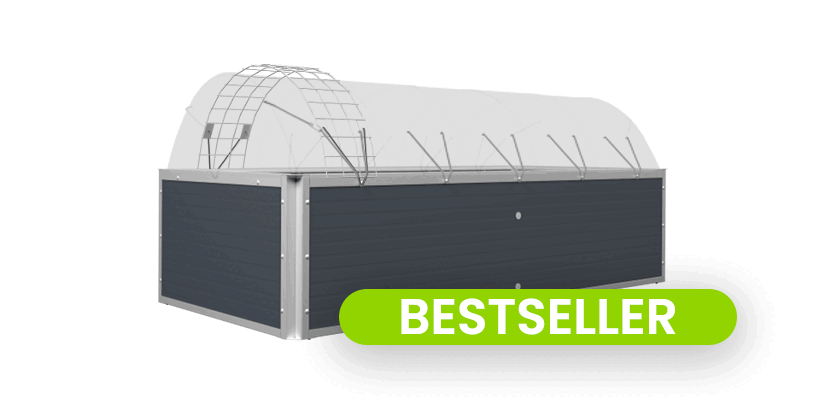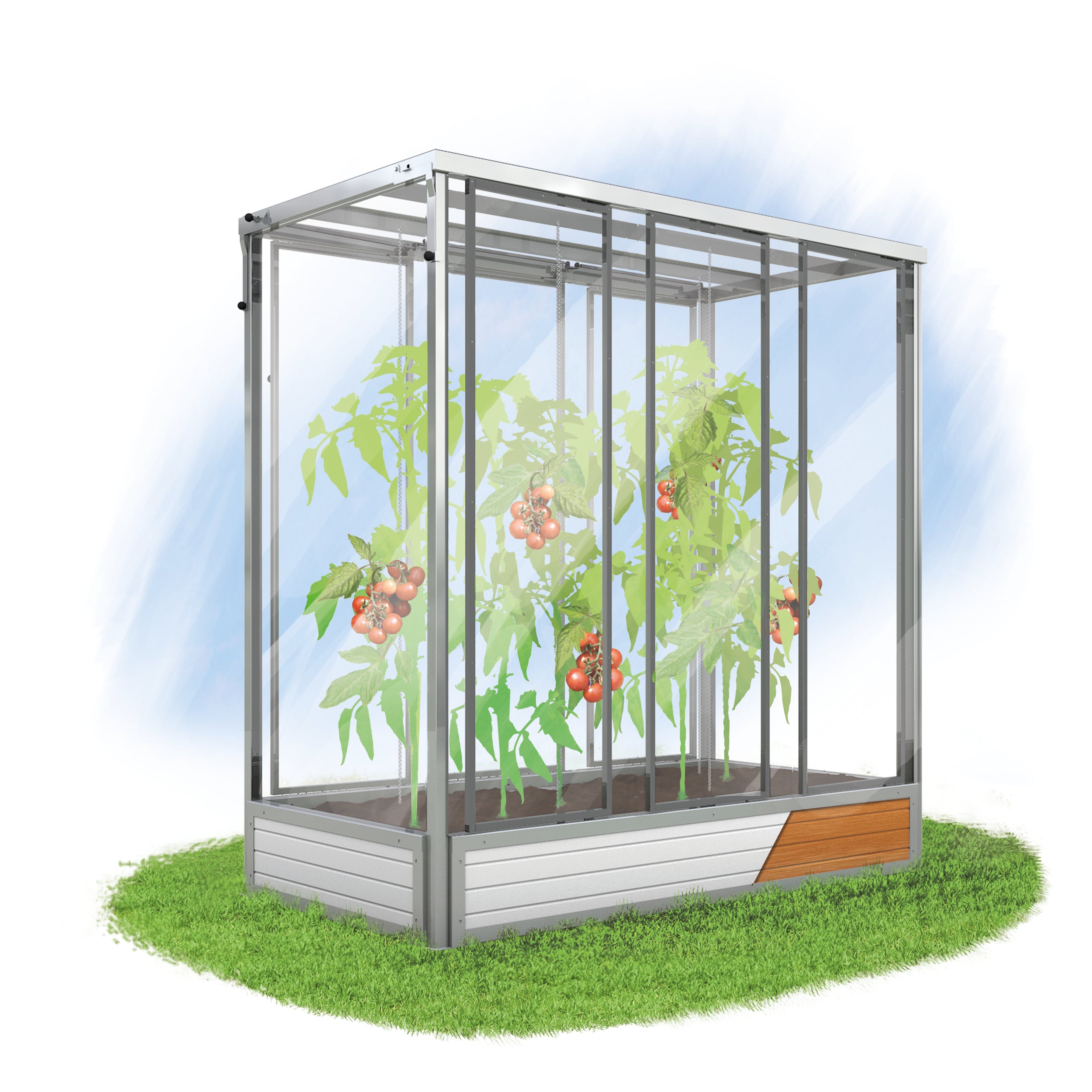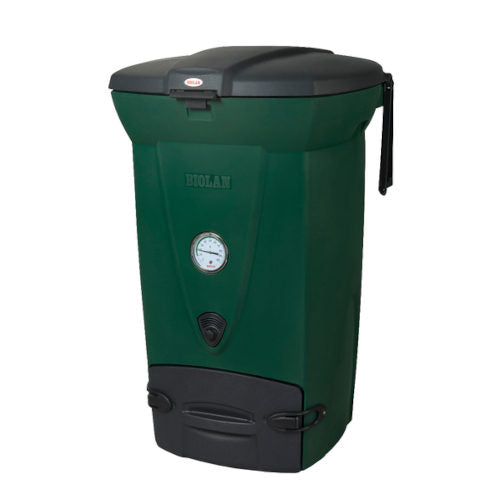As in a ground-level bed, it is also a good idea to mix the soil with fertilizer in a raised bed . This will enrich the soil's nutrient content and allow your plants to thrive. Here you will find the most important information about the different types of fertilizers that are suitable for raised beds and are an ideal alternative to artificial fertilizers.
How often do you have to fertilize a raised bed?
A raised bed is not only visually appealing, but also offers numerous advantages for growing vegetables and herbs . Thanks to the layering of different materials, it provides the plants with plenty of nutrients right from the start. However, many gardening enthusiasts ask themselves how often they should fertilize their raised bed to ensure optimal growth conditions. Hochbeet.com has prepared a few tips for you.
Starting phase of the raised bed:
A freshly planted raised bed usually requires During the first year, little additional fertilization is required. The decomposition of organic materials such as garden waste, leaves and compost releases sufficient nutrients during this period. This natural decomposition process provides the plants with a constant source of nutrients.
After the first year:
From the second year onwards, the original nutrient source of the raised bed begins to diminish. This is when it is advisable to start fertilising. The frequency of fertilising depends on the type of fertiliser and the plants grown.
Pay attention to the plants:
The plants themselves often give clues as to whether they need additional nutrients. Yellow leaves, stunted growth or lack of fruiting can be signs of nutrient deficiencies.
Fertilizing with Compost – The Black Gold of the Garden
Compost is not only an environmentally friendly alternative to industrial fertilizers, it is also a valuable contribution to sustainability and circular economy in your garden. If you want to optimally fertilize your raised bed, compost offers a number of advantages:
- Important nutrient intake: A rich compost provides the raised bed soil with essential nutrients your plants need for healthy growth.
- Ideal consistency: A good compost has the consistency of forest soil: crumbly and fragrant. This not only improves the soil structure, but also promotes microbial life in the soil.
- The right moisture: Make sure that your compost is neither too wet nor too dry A test: If no water comes out when you squeeze the compost in your hand, it is optimal.
- Fertilizer maturity test : To make sure the compost is ripe and ready for fertilization, you can Sow a small amount of cress on it . If small cress plants sprout within a week, the compost is ready for your raised bed.
- Pre-sieving for a fine structure: Before fertilizing, you should sift the compost. This will ensure that no larger particles or unrotted material end up in the raised bed.
- Balanced nutrient intake: Compost is rich in phosphorus and potassium, but has a lower nitrogen content. Therefore, it is important to have a good mix of carbon-rich (e.g. leaves, paper) and nitrogen-rich (e.g. green waste, kitchen waste) materials in the compost heap. The ideal ratio is 20:1 in favor of carbon.
- Nitrogen addition: Since nitrogen is essential for plant growth, it should be added to the compost in the form of horn shavings or sheep's wool pellets .
By correctly using compost as fertilizer, you can not only enrich the soil of your raised bed, but also make an active contribution to the environment.
Fertilizing with Manure – More than just Waste
Fertilizing soils with manure has a long tradition. Although fewer people have direct access to it these days, manure has great potential for fertilizing your raised bed:
- What is manure? Manure consists of the excrement of animals such as cows, horses, chickens or pigs and their bedding - usually straw or sawdust.
- Nutrient Source : This natural fertilizer contains a variety of valuable nutrients that benefit plant growth.
- Composting for added value: To increase the nutrient content and improve the quality of manure, it can be composted with garden waste.
- Be careful with fresh manure: It is important not to use fresh manure directly as fertilizer, as it contains high amounts of ammonia, which can be too “harsh” for plants.
- Consider exposure time: In order to use the full potential of the manure and not to damage the plants, it should be worked into the soil several weeks before planting . The ideal time for this is either in autumn or from January to February . This allows the nutrients to be gradually released and the rotting process to begin.
- Plant-specific fertilization: Some vegetables, such as potatoes, cabbage, cucumbers, tomatoes and pumpkins, particularly benefit from fertilization with manure. However, with others, such as onions, carrots and radishes, you should be more cautious.
Fertilizing with manure is an effective way to enrich your raised bed and provide your plants with the nutrients they need. At the same time, you are contributing to sustainable gardening by making sensible use of organic waste.
Fertilizing with horn shavings – natural nitrogen
Horn shavings, horn meal and horn flour have been used for many generations as a slow-acting organic nitrogen fertilizer. It is usually made from crushed horn and hooves from slaughtered animals. The fertilizing effect sets in faster the finer the horn shavings are planed, so horn meal is the most effective. If coarse horn shavings are used, the effect develops more slowly, but lasts longer. Ideally, you should use a mixture that contains both coarse horn shavings and horn meal. These are also suitable ideal for composting , as not only is the nutrient content increased, but the rotting process is also accelerated. When fertilizing the raised bed, it is best to apply the shavings shortly before planting, mixing in a little horn meal. You can also put this directly into the planting hole, water it a little and then plant the desired plant directly. In general, make sure that the soil of the raised bed is a little moist when fertilizing with horn shavings.
Fertilizing with sheep's wool pellets – plush for the raised bed
Sheep wool pellets, which are made from leftover wool, are a popular fertilizer in organic farming and offer numerous advantages for your raised bed:
- Environmentally friendly fertilizer: Instead of throwing away the dirty remains of the new wool, they are reused as nutrient-rich fertilizer. This sustainable approach helps to use resources sensibly and reduce waste.
- High nitrogen content: Sheep wool pellets are rich in nitrogen, an essential nutrient for plant growth.
- Better water retention: A notable advantage of sheep wool pellets over other fertilizers is their ability to retain water effectively. This can be particularly beneficial during dry periods.
- Wide range of applications: In addition to raised beds, sheep wool pellets can also be used in other garden areas, such as the potato tower , to increase crop yields.
- Slow-release fertilizer: The release of nitrogen from sheep wool pellets is gradual, making them ideal as a long-release fertilizer.
- Ideal for heavy feeders : Plants with high nutrient requirements, also called heavy feeders, particularly benefit from fertilization with sheep's wool pellets.
- Easy to use: You can spread the pellets directly in the bed and cover them with some soil or put them directly into the planting hole before planting the plant.
Sheep wool pellets are an environmentally friendly, sustainable and effective way to fertilize your raised bed. Not only do they provide nutrients for your plants, they also support soil health and promote sustainable gardening.
What are you waiting for? Follow the valuable advice from our blog and make your raised bed strong through optimal fertilization.














